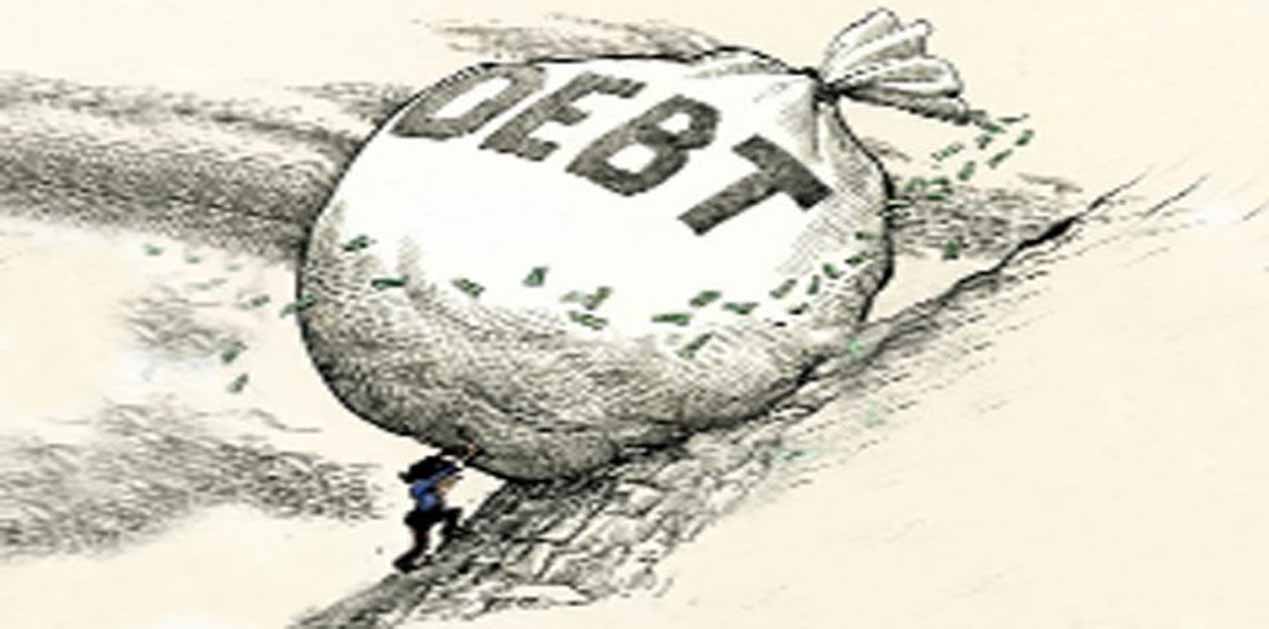Now that Imran Khan has assumed the office of the Prime Minister of Pakistan, the most pressing challenge for him would be the management of Pakistan’s economy. These revolve around mounting debt (both domestic and external), growing Chinese loans and the real possibility of approaching the International Monetary Fund (IMF) for a bailout together with its tough conditionalities.
A quick look at the nation’s key debt/deficit indicators would help get a clear picture of the state of Pakistan’s economy:-
- Domestic debt and liabilities rose by 73 percent from Rs. 9.76 trillion to Rs. 17 trillion between 2013 and 2018, the period corresponding with the Pakistan Muslim League-Nawaz’s (PML-N) tenure.
- Budget Deficit rose from Rs. 1.8 trillion to Rs. 2.2 trillion in fiscal year (FY) 2017-18, amounting to 7 percent of the Gross Domestic Product (GDP).1,2
- External debt peaked at $91.8 billion by March end, growing at a staggering 9.3 percent per annum in the last five years.3
- For the fiscal year ending June 30, 2018, the Current Account Deficit (CAD) stood at its highest, amounting $18 billion (5.7 percent of the GDP), almost 45 percent higher than the FY 2017 figure ($12 billion). 4
- Foreign Exchange reserves dropped to $9 billion, an amount enough to finance only six weeks of imports.5 Of this, $6.7 billion is in the form of short term borrowings.6
To stabilise the external sector, the State Bank of Pakistan had employed short term measures, like devaluing the currency by 20 percent since December 2017. This, however, failed to increase exports and ended up in ballooning the CAD further.7 The other measure, that is, external borrowings have only provided short term forex reserve stability.
Former finance minister Ishaq Dar has been blamed for the present state of the Pakistani economy. His policy of rampant borrowings to boost reserves only made matters worse. In the last five years, Pakistan’s domestic and external borrowings amounted Rs. 7 trillion and $43 billion respectively.8 The outgoing government has also been accused of understating the debt by amending the definition of ‘debt’ in the Finance Act, 2017.9 Under the 2005 Fiscal Responsibility and Debt Limitation Act, the original definition of debt was “sum of total outstanding borrowings”. This was amended in the Finance Act of June 2017, as the amount “government serviced out of the Consolidated Fund, and debts owed to the International Monetary Fund”, thus excluding “the public debt contracted by public sector enterprises and publically-guaranteed debt.”10 This amendment understated the public debt by Rs. three trillion.11
While borrowings and high deficits are acceptable, as long as they are channelised productively into investments generating high returns, Pakistan’s borrowings have mostly gone into repaying loans and stabilising the dwindling foreign exchange reserves. This has hardly left any resources for structural reforms. In a word, the Pakistani economy has been successful in delaying the crisis with these borrowings.
Apart from the skepticism on the returns generated by China Pakistan economic Corridor (CPEC) driven investments, Pakistan’s low tax base (only one percent of the adult population pays taxes), poorly performing Public Sector Enterprises (with an estimated loss of around Rs. 1 trillion) amplify the challenges to the new regime.12,13 Even the electricity sector has been reeling under severe stress with the over Rs. 1 trillion worth total circular debt, which refers to the rapidly growing dues the Government owes to power producers, distributors and fuel suppliers.14
With regard to Pakistan’s external financing needs, at the end of the fiscal year 2018-19, some estimates have come forth. The Finance Ministry’s estimates put the requirement as $23 billion, but the IMF’s calculation is $27 billion. 15 Economists Hafiz Pasha and Farrukh Saleem have calculated the financing requirement at $26 billion this year. Saleem further estimates the figure to reach $45 billion by 2022.16
During the fiscal year 2017-18, Pakistan received $2.7 billion in Foreign Direct Investment (FDI), $2.3 billion in Sukuk and Euro Bonds, $6.8 billion in borrowings (of which $4.4 billion were borrowed from China), all totaling to $11.8 billion.17,18 The CAD figure being $18 billion, the inflow was not sufficient as it still left a $6.2 billion shortfall. It remains to be seen, how Pakistan arranges for financing the shortfall this fiscal year. A short term relief for the coming Government is that China and Saudi Arabia have assured the new regime of assistance with forex injections.19 While CPEC-driven Chinese loans and machinery imports have been the mainstay of the skewed Sino-Pak economic ties, Pakistan cannot risk depending totally on China. It would look to diversify its foreign investment sources as well as take recourse to the IMF.
Given the magnitude of the problem, the Pakistan Tehreek-e-Isnaf Party (PTI) is seriously considering to approach the IMF, despite Imran having pledged in his earlier speeches that Pakistan did not need any support from the IMF. Over the last three decades, Pakistan has secured 12 bailouts from the IMF. With the last $6.6 billion borrowings under IMF’s Extended Fund Facility (EFF) ending in 2016, Pakistan, if it does approach the IMF, will be negotiating the 13th bailout. 3 Estimating from Pakistan’s Special Drawing Rights (SDR) quota (it has 2031 million SDRs at present), borrowings under the Extended Fund Facility (a program designed by the IMF to specifically address Balance of Payments crisis) can be made up to 435 percent of the SDR quota. 21 This translates to $12.1 billion borrowings limit under the EFF. The earlier $6.6 billion borrowed in 2013 (IMF liabilities this February amounted $6.37 billion) remains to be repaid in installments by 2026, hence Pakistan’s borrowing limit gets reduced to around $6 billion under the EFF’s normal access conditions. The IMF estimated the installment for 2018-19 at SDR 243 million (around $330 million at present dollar value of SDR), which is stated to peak to SDR 820 million (approximately $1 billion) by 2021.22 Nevertheless, repayment to the IMF would not exceed more than six percent of its total external debt servicing obligations in a given year.
The US, which has a dominant voice in the IMF, is concerned not only about Pakistan’s questionable role in its fight against the Taliban, but its growing dependence on Chinese loans. The latter concern seems to have grown recently as sixteen senators “urged the Trump administration to block the IMF from bailing out countries that have acquired loans from China” under the Belt and Road Initiative umbrella.23 After the elections, even the Secretary of State Mike Pompeo expressed caution on IMF’s course of action on Pakistan out of the fear that the funding could go into “bail(ing) out Chinese bond holders, or China itself”.24
Given the urgency of tackling the economic crisis, the PTI was quick to announce Asad Umar’s name as the Finance Minister, keeping the nation guessing on all other ministerial portfolios. Noting that the nation was under severe crisis, Umar was quick to respond on the issues, stating that the decision to go to the IMF would be taken by September.25 In March 2018, the IMF “concluded its first post program monitoring discussions with Pakistan”, which pertained to greater monitoring of those member nations with outstanding credit after the repayment duration has expired.26 The report, while retaining faith in the Pakistani economy’s positive outlook (backed by rise in the growth rate at 5.8 percent, increased power supply and CPEC related investments) expressed concerns over “external and fiscal imbalances”.
To prevent the next IMF bailout from being consumed in correcting the balance of payment problems without any follow-up on structural reforms, some strict conditionalities could be in the offing. These could relate to greater transparency on CPEC projects or restructuring of debt-ridden public enterprises (especially the entities like Pakistan International Airlines and Pakistan Steel Mills). Imran Khan would thus have to begin his innings by taking some hard economic decisions, beginning with increasing the tax-base and cutting expenditure. Such measures are unlikely to be popular with the population who are looking forward to a ‘Naya’ Pakistan.
References:
- Khaleeq Kiani, “Budget deficit to reach 6pc in 2017-18: IMF”, Dawn, Islamabad, March 21, 2018.
- Nasir Jamal, “PTI insists IMF is a ‘fallback’”, Dawn, Islamabad, August 13, 2018.
- Dr. Ashfaue H Khan, “Misguiding people on debt”, Business Recorder, July 20, 2018.
- Salman Siddiqui, “Pakistan’s current account deficit peaks at $17.99b”, The Tribune, Karachi, July 20, 2018.
- Nasir Jamal, “An economy on a wobbly base”, Dawn, Islamabad, July 30, 2018.
- Ibid.
- Ibid.
- Dr. Farrukh Saleem, “$26 billion”, The News, Karachi, August 12, 2018.
- Shahbaz Rana, “PTI warns of legal battle over definition change of public debt”, The Tribune, Karachi, September 20, 2017.
- Ibid.
- Ibid.
- Asif Shahzad, “Pakistan declares tax amnesty to broaden income revenue base”, Reuters, London, April 5, 2018.
- Dr. Farrukh Saleem, “$26 billion”, The News, Karachi, August 12, 2018.
- Khalid Mustafa, “Defaulters in power sector cause 47pc surge in circular debt”, The News, Karachi, August 13, 2018.
- Nasir Jamal, “PTI insists IMF is a ‘fallback’”, Dawn, Islamabad, August, 13, 2018.
- Dr. Farrukh Saleem, “$26 billion”.
- Waqar Masood Khan, “Economy: Challenges and opportunities”, Pakistan Today, Lahore, July 27, 2018.
- Adnan Amir, “How US policy is turning Pakistan into a Chinese colony, thwarting America’s regional ambitions”, Hong Kong, August 8, 2018.
- Mehtab Haider, “Foreign exchange deposits: Pakistan gets assurance from China, Saudi Arabia”, The News, Karachi, August 14, 2018.
- Our Correspondent, “EIU says Pakistan may failto persuade IMF for bailout”, The News, Karachi, August 7, 2018.
- “IMF Extended Fund Facility (EFF)” at
- “Pakistan : First Post-Program Monitoring Discussions-Press Release; Staff Report; and Statement by the Executive Director for Pakistan” at https://www.imf.org/en/Publications/CR/Issues/2018/03/14/Pakistan-First-Post-Program-Monitoring-Discussions-Press-Release-Staff-Report-and-Statement-45724 (accessed August 10, 2018).
- Salman Siddiqui, “IMF dismisses talk of denying Pakistan bailout”, Tribune, Karachi, August 11, 2018.
- Reuters Staff, “U.S.' Pompeo warns against IMF bailout for Pakistan that aids China”, Reuters, London, July 31, 2018.
- Salman Siddiqui, “IMF dismisses talk of denying Pakistan bailout”, Tribune, Karachi, August 11, 2018.
- “Pakistan : First Post-Program Monitoring Discussions-Press Release; Staff Report; and Statement by the Executive Director for Pakistan” at https://www.imf.org/en/Publications/CR/Issues/2018/03/14/Pakistan-First-Post-Program-Monitoring-Discussions-Press-Release-Staff-Report-and-Statement-45724 (accessed August 10, 2018).
https://www.imf.org/en/About/Factsheets/Sheets/2016/08/01/20/56/Extended-Fund-Facility (accessed August 10, 2018).
(The paper is the author’s individual scholastic articulation. The author certifies that the article/paper is original in content, unpublished and it has not been submitted for publication/web upload elsewhere, and that the facts and figures quoted are duly referenced, as needed, and are believed to be correct). (The paper does not necessarily represent the organisational stance... More >>
Image Source: https://profit.pakistantoday.com.pk/wp-content/uploads/2017/03/debt-696x392.jpg










Post new comment